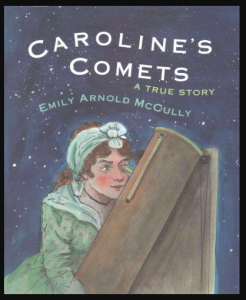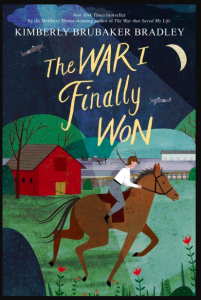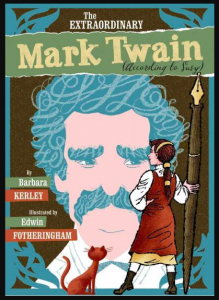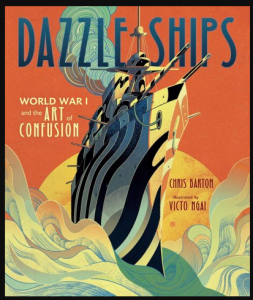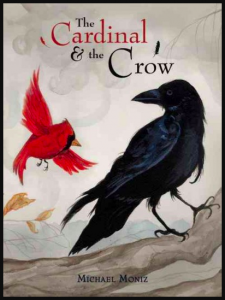Stratton, Allan. The Way Back Home. Toronto: Scholastic Canada, 2017.
Zoe does not want her grandmother to be moved into a care home. But Alzheimer’s disease is making it increasingly unsafe for her grandmother to live on her own. What can Zoe’s parents do to cope with the situation? What can Zoe do to help?
She decides to take her grandmother on a road trip to Toronto to find a long-lost uncle. But more surprises and more difficulties are in store than she anticipated. Now how will Zoe cope?
A modern tale of family relationships and gender identity. While the frequent colloquialisms will make this book sound dated within a few years, it is a quickly paced story that will appeal to many readers 13 to 17 years old.
Month: May 2018
Reaching the stars…
McCully, Emily Arnold. Caroline’s Comets: A True Story. New York: Holiday House, 2017.
Caroline Herschel was born in Germany in 1750. Her father and brothers were musicians but she – being a girl – was kept busy doing housework. Everything changed when she was 22 years old. She joined her older brother in England and became a professional singer and then an assistant to her brother, who had become an astronomer for King George III. Later, she also earned a salary as an astronomer for the king. Before she died in 1848, she had discovered 8 comets and become a star among scientists.
Quotations from Caroline’s diary are embedded in this incredible story of the first woman to discover a comet. The gently old-fashioned pen, ink, and watercolour illustrations enhance this picture book biography for readers 9 years old and up.
Seeing goodness…
A multiple award-winner and New York Times bestseller!
Bradley, Kimberly Brubaker. The War I Finally Won. New York: Dial Books for Young Readers 2017.
Do you need courage to have hope? Can you know something but not believe it? How do you learn to overcome fear? The story of Ada and Jamie, evacuated from London in The War That Saved My Life, continues in this 385-page novel recommended for readers 12 years old and up.
The story begins with surgery to repair Ada’s clubfoot. But surgery can’t repair the sense of rejection she still feels from years of abuse. And surgery can’t teach her how to trust anyone except herself. It is steadfast love from her new guardian and her own determination to learn that transforms Ada from a fearful 11-year-old to a confident 14-year-old ready to embrace the goodness of life.
More stories set in World War 2
P.S. Part of the brilliance of this novel is its quiet complexity. While told from the limited point of view of Ada, the reader sees that we all have limited points of view. And sometimes our lack of knowledge limits our ability to see clearly. Lady Thorton is stand-offish due to limitations imposed by her childhood. People in the village mistrust Ruth – a Jewish refugee – due to ignorance of events in Germany. Susan assumes she will be rejected by a friend’s family, and Maggie thinks her mother doesn’t care about her. Over and over again, we see that life may have been terrible in the past but it can still be good in the future. And we are all lovable.
Setting the record straight…
“The secret of getting ahead is getting started.” – Mark Twain
Kerley, Barbara. The Extraordinary Mark Twain (According to Susy). New York: Scholastic Press, 2010.
This is a frank biographer and an honest one; she uses no sandpaper on me.” That’s what Mark Twain said about his own daughter, who secretly – when she was thirteen years old – kept a journal about her adored papa. Author Barbara Kerley tells the whole story in this intriguing picture book biography. Varying-sized fonts, humorous full-page illustrations by Edwin Fotheringham, and sample diary entries complete with misspellings help to tell this delightful account of one of the most well-known American writers. A timeline, author’s note, and tips for writing a biography complete this picture book highly recommended for all who have enjoyed the tales of Tom Sawyer and Huckleberry Finn.
“It is better to keep your mouth closed and let people think you are a fool than to open it and remove all doubt.”
“The human race has one really effective weapon, and that is laughter.”
“Kindness is the language which the deaf can hear and the blind can see.”
Creatively camouflaged…
Barton, Chris. Dazzle Ships: World War I and the Art of Confusion. Minnneapolis: Millbrook Press, 2017.
Why paint ships in eye-catching patterns? Why use striking colours? To confuse the enemy. German submarines were attacking British ships during the first World War. Not only warships but also ships bringing food to the island nation. A quiet unassuming lieutenant-commander came up with an idea: paint ships in bold colours and patterns that make it difficult to discern the speed and direction of travel. The German torpedoes would be less likely to hit the British ships. In 1917, the project began and by the end of the war in 1918, almost 3,000 British ships and over 1200 American ships had been painted in dazzling designs.
This fascinating picture book – illustrated by award-winning Victo Ngai – is beautifully designed. The style and size of the font complements the tone of the story and the brilliance of the artwork. Additional information – including a timeline and bibliography – is included at the end of the book. The rhythm of the story makes it wonderful for reading aloud but this children’s book is highly recommended for readers of any age interested in art and the history of war.
P.S. The author’s note includes information on the research process which would be useful for middle-school students. “Research done right does not merely confirm what you expect to see — it will show things you had not anticipated.”
Finding a friend…
A fable…
“Pride and foolishness often roost on the same branch.”
Moniz, Michael. The Cardinal and the Crow. Vancouver, B.C.: Simply Read Books, 2014.
Lonely old Crow is constantly mocked for his appearance, especially by young Cardinal. When Cardinal is caught by a cat, though, it is Crow who rescues him through trickery. Inspired by an Aesop’s fable, this picture book with gently evocative illustrations will appeal to readers 5 to 14 years old.
“Persuasion is often more effectual than force.”
“Gratitude is the sign of noble souls.”
“It is not only fine feathers that make fine birds.”
